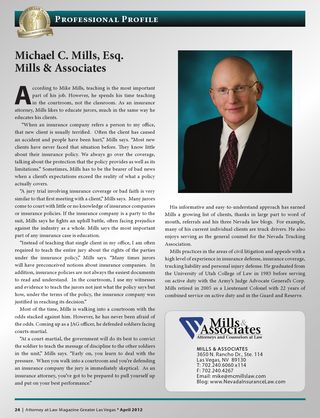Under Nevada Rule of Civil Procedure 41(e), the court is obliged to dismiss any suit that is not brought to trial within five years. The Rule states:
(e) Want of Prosecution. The court may in its discretion dismiss any action for want of prosecution on motion of any party or on the court’s own motion and after due notice to the parties, whenever plaintiff has failed for 2 years after action is filed to bring such action to trial. Any action heretofore or hereafter commenced shall be dismissed by the court in which the same shall have been commenced or to which it may be transferred on motion of any party, or on the court’s own motion, after due notice to the parties, unless such action is brought to trial within 5 years after the plaintiff has filed the action, except where the parties have stipulated in writing that the time may be extended. When, in any action after judgment, a motion for a new trial has been made and a new trial granted, such action shall be dismissed on motion of any party after due notice to the parties, or by the court of its own motion, if no appeal has been taken, unless such action is brought to trial within 3 years after the entry of the order granting a new trial, except when the parties have stipulated in writing that the time may be extended. When in an action after judgment, an appeal has been taken and judgment reversed with cause remanded for a new trial (or when an appeal has been taken from an order granting a new trial and such order is affirmed on appeal), the action must be dismissed by the trial court on motion of any party after due notice to the parties, or of its own motion, unless brought to trial within 3 years from the date upon which remittitur is filed by the clerk of the trial court. A dismissal under this subdivision (e) is a bar to another action upon the same claim for relief against the same defendants unless the court otherwise provides. (emphasis added)
In interpreting the Five-Year Rule, the Nevada Supreme Court has said on numerous of occasions that Rule 41(e) requires dismissal after five years. Harvey’s Wagon Wheel, Inc. v. Van Blitter, 959 F.2d 153, at 156 (9th Cir. 1992), Morgan v. Las Vegas Sands, Inc., 118 Nev. 315, at 320, 43 P.3d 1036 (2002), Erickson v. One Thirty-Three, Inc., 104 Nev. 755, at 758, 766 P.2d 898 (1988), C.R. Fedrick, Inc. v. Nevada Tax Comm’n, 98 Nev. 387, at 389, 649 P.2d 1372 (1982), Ad-Art, Inc. v. Denison, 94 Nev. 73, at 74, 574 P.2d 1016 (1978), Johnson v. Harber, 94 Nev. 524, at 526, 582 P.2d 800 (1978), Plankinton v. Fifth Judicial Dist. Court, 93 Nev. 643, at 645, 572 P.2d 525 (1977), Bank of Nevada v. Friedman, 86 Nev. 747, at 749, 476 P.2d 172 (1970), Great W. Land & Cattle Corp. v. Sixth Judicial Dist. Court, 86 Nev. 282, at 285, 467 P.2d 1019 (1970), Volpert v. Papagna, 85 Nev. 437, at 440, 456 P.2d 848 (1969), Lindauer v. Allen, 85 Nev. 430, at 435, 456 P.2d 851 (1969), Faye v. Hotel Riviera, Inc., 81 Nev. 350, at 352, 403 P.2d 201 (1965), Smith v. Garside, 81 Nev. 312, at 314, 402 P.2d 246 (1965), Thran v. First Judicial Dist. Court, 79 Nev. 176, 380 P.2d 297 (1963), cited, Dubin v. Harrell, 79 Nev. 467, at 470, 386 P.2d 729 (1963).
One way to avoid the effects of the Five-Year Rule is to get a written stipulation to extend time of trial beyond the five-year period. Erickson v. One Thirty-Three, Inc., 104 Nev. 755, at 758, 766 P.2d 898 (1988), Prostack v. Lowden, 96 Nev. 230, at 231, 606 P.2d 1099 (1980), Thran v. First Judicial Dist. Court, 79 Nev. 176, 380 P.2d 297 (1963).
A second way to avoid the effect of the rule is through tolling brought on by a bankruptcy. Rickard v. Mongomery Ward Co., 120 Nev. 493, 96 P.3d 743 (2004). However, tolling only protects the party that files the bankruptcy and does not protect any other party to the action. Edwards v. Ghandour, 123 Nev. Adv. Op. 14 (2007).
The Five-Year Rule can also create a secondary effect. Not only does the rule cause a dismissal of that specific action, it can also create a bar to any subsequent suits brought on the same facts. In the case of Dubin v. Harrell, 79 Nev. 467, 386 P.2d 729 (1963), citing, Lindauer v. Allen, 85 Nev. 430, at 435, 456 P.2d 851 (1969), the court explained the policy behind the rule that allows the court to bar subsequent actions. The court said:
A parallel may be found by reference to statutes of limitation. There the underlying policy is to preclude the litigation of stale claims. Here the policy to be served is that, once suit is commenced, it must be carried forward with reasonable diligence unless circumstances exist which excuse delay (if less than five years has passed). The statute of limitations is a defensive weapon granted a party defendant and may be asserted to defeat a claim for relief which has not been filed within the prescribed period. NRCP 8(c). Rule 41(e) invests the court with the power (though inherently possessed) to refuse to hear a case that has been filed but not prosecuted with the diligence required. In either case, i.e., whether the claim is barred by limitations or dismissed for want of prosecution, the judgment entered does not constitute an adjudication on the merits of the claim, in the literal sense, for there has been no hearing on the merits. In neither instance is the substantive cause of action destroyed—just the availability of a remedy to enforce it. A claimant’s right to a “day in court” is subject to reasonable procedural requirements (cf. Thran v. District Court, 79 Nev. 176, 380 P.2d 297) and may be lost by the failure to comply with them.
If the court dismisses the case, it will have discretion to determine whether the dismissal should be with our without prejudice. If the dismissal is without prejudice, a later suit can be brought so long as the statute of limitation has not run. Lighthouse v. Great Western Land & Cattle Corp., 88 Nev. 55, 493 P.2d 296 (1972).
 Follow
Follow Email
Email


